While the behaviors of consumers are changing in general, the way in which they make use of their devices to buy products is also evolving.
By looking back over the last several years and observing the big brands’ improvised plans for their own markets, we withdraw the top 8 eCommerce trends going on globally. And we would love to share all these straightforward thoughts in this roundup article.
1. Amazon and other multi-vendor marketplaces soar in revenue
For dynamic merchants in this technological plateau of 2020, creating an online presence is not enough. They always keep their antennas up for any opportunity to develop new omnichannel infrastructures.
Ultimately, individual sellers are now looking to build digital kiosks across multiple platforms. Consumers are heading to omnipotent markets because it’s convenient for them to choose from a diverse set of products and get orders delivered to their doorsteps without leaving the e-store.
Amazon, eBay, and Etsy markets are racking up record profits, especially during the pandemic.
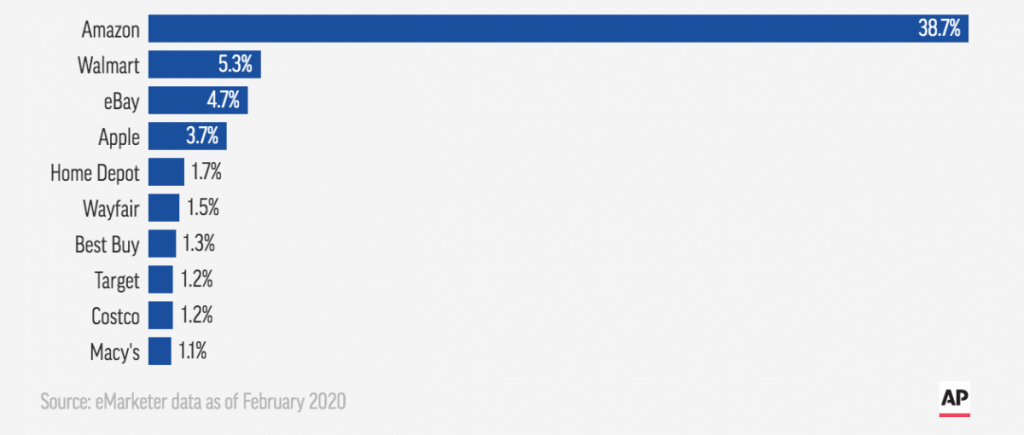
Have you noticed a theme this year?
Some sectors are actually flourishing during tough times, and that is a foreseen reality.
Multi-vendor marketplaces loom to bring big bucks if done right. Those last months have taught us one thing those who dare face great risks will earn huge rewards.
Up-and-coming merchants may not be versatile like Amazon just yet, but you can always start lean with niches such as toys, games, books, gym equipment, indoor sports, health tips, etc.
Who knows? An ant could become a giant or, a giant ant! 🙂
2. Progressive web apps are becoming more than favorable
For those who haven’t heard about progressive web app (PWA), that is a website that looks and behaves as if it is a mobile app. Thanks to their native mobile device features, PWAs handle all the operations without an app download/purchase.
You can hire JavaScript developers to create a modern and progressive web app.
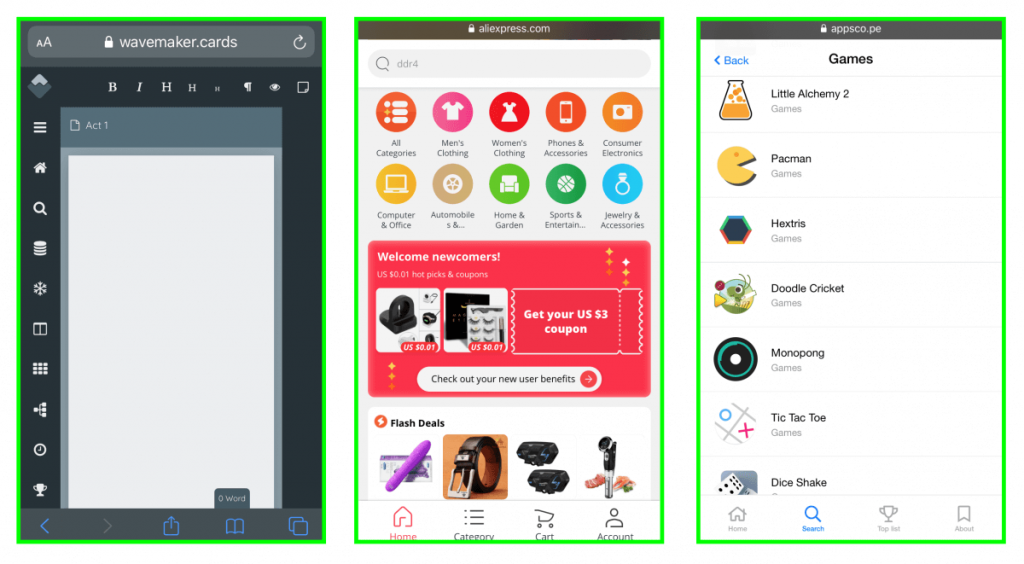
PWAs come in many shapes and designs, from simple taking note tools to enormous e-stores. Appscope is a directory of Progressive Web Apps, where you can find best examples of PWAs. They can send web push notifications, work offline and be accessible via a home screen shortcut.
PWAs’ effectiveness research also brings about impressive figures: frequent engagement increases by 137%, bounce rate is reduced by 42% and page views jump up by over 133%.
While the mobile app trend is totally beneficial for retail business owners to follow, challenges with native applications still stand to be unavoidable obstacles. Designing mobile apps requires OS-specific techniques, thus resulting in an enormous cost sink.
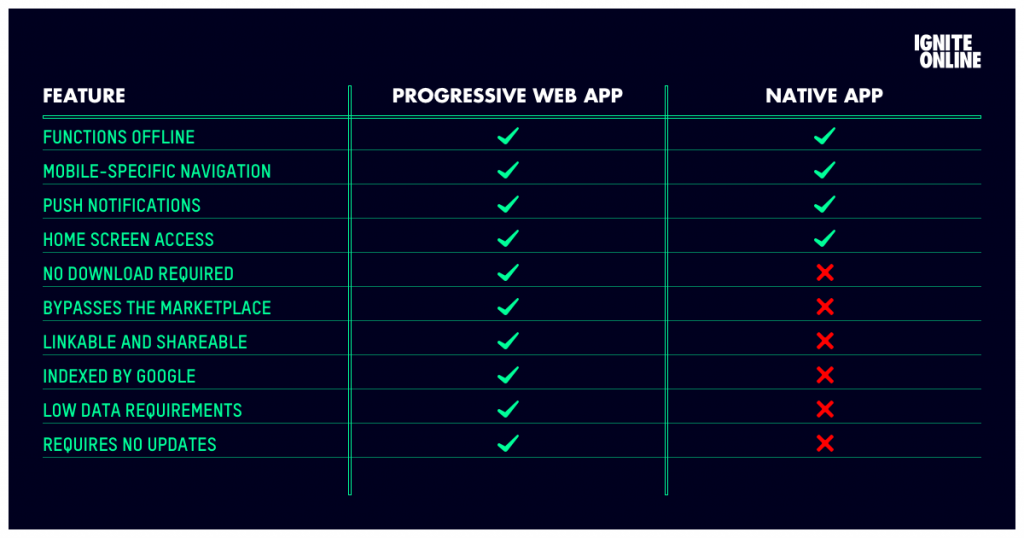
Moreover, Apple App Store and Google Play Store are both notorious for its harsh competition rate, which makes it even more difficult for mobile apps to earn exposure.
Overall, PWAs are an enhanced deployment space that most developers and website owners should check into.
3. Voice commerce is the next big thing in retail
Voice commerce becomes the next major disruptive force in retail, according to OC&C Strategy Consultants Study.
Voice-powered shopping is anticipated to reach $40 billion by 2022, jumping from the humble figure of $2 billion in 2018. In market share, this means consumer spending via voice assistants will likely reach 18% by 2020.
How, what and best are ranking highest among top voice search queries. Voice is changing search behaviors and account for 50% of all searches across the internet in 2020. And that is so good a reason that we should optimize for voice search.
The voice-based search is way more conversational and natural compared to traditional web search.
Therefore, 4 best practices to optimize voice search for your web pages include:
- Providing more local contents
- Producing long-tail keyword phrases beginning with What, When & Where
- Writing concise answers with less than 30 words per sentence
- Applying Speakable schema property to indicate sections suitable for audio playback using text-to-speech (TTS).
Now we move on to the next critical trend that have a big leap from 2020 onwards due to COVID-19.
4. Contactless technology spikes in demand
Although American retail customers seem slow to adopt contactless mobile payments compared with other regions such as anchor cities of China, recent published articles suggest that this is soon to be changed as more U.S. stores add this technology to their POS systems.
Contactless payment technology appears in various forms. While China has been widely utilizing QR codes, the world’s leading contactless market – Australia goes ahead with NFC.
To an average American consumer, contactless payment means Apple Pay. To some others, it’s mobile wallets. Yet it’s actually the ability of using any bank credit or debit card to conduct transactions at a terminal with no pin, signature or other authentication forms required.
Contactless delivery thrives during COVID-19. Global shopping behaviors and personal hygiene habits are alarmingly changing. Soon thereafter, contactless payment has become favorable. The RTi Research’s survey among 500 Americans found that 30% of respondents have tried contactless payment methods for the first time, and of whom 70% would keep using it later on.
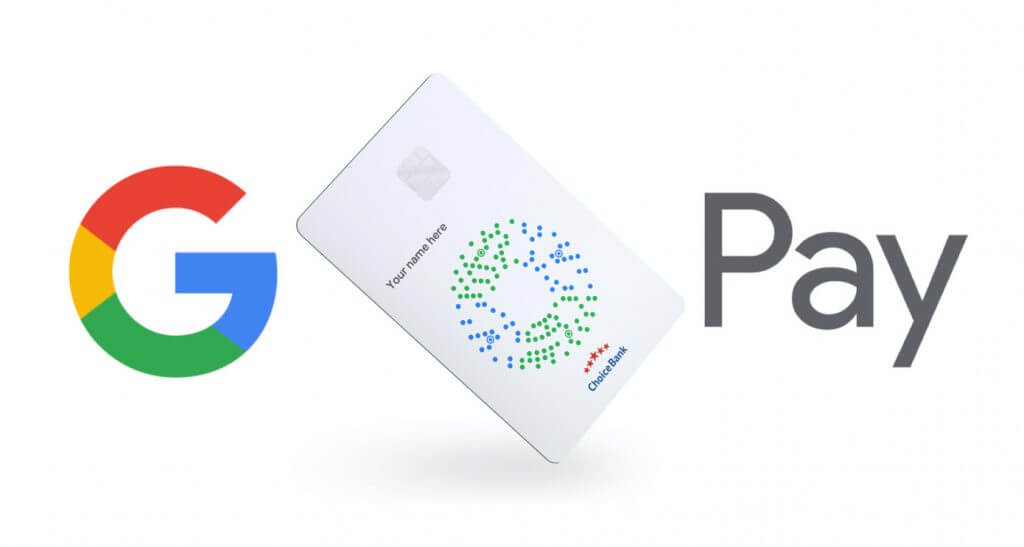
Japan, Germany and India are poised to take up this payment innovation. With more and more U.S. issuers that offer contactless credit cards, young adults with their greater willingness to use mobile payments, along with new developments in Venmo, Google Card, Apple Pay; all the contactless technology barriers concerning security and facilities will likely be lifted in the coming years.
5. Big brands are piloting interactive product visualization
Nike in Brazil has run a splendid marketing campaign targeting social media users who are under lockdown. Mobile holders can point their smartphones at the sky to get a vision of an augmented reality (AR) cloud in the shape of an Air Max sneaker. Exclusive music contents then get unlocked to deliver an exotic experience to all users.
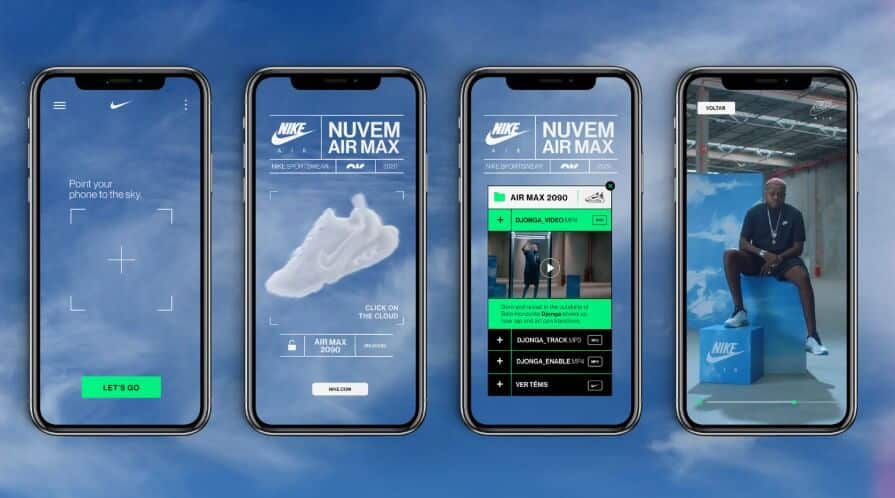
In the same niche of the fashion market, Burberry also collaborates with Google on 3D product display using AR tool. This technology deployment helps provide the in-store showcase on web/mobile interface and more engaging customer experience (CX).
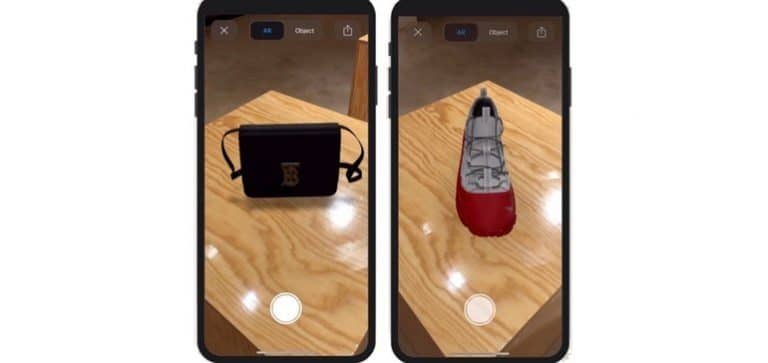
An influx of experimenting with AR, AI, and 3D renderings in interactive product display is conducted by a vast amount of other retailers, including Wayfair, Sephora, Sally Beauty, Ikea. Now consumers can experience brand products and services before buying, almost like the way we take food sampling in the malls.
Following Google’s shoppable ad units, Shopify launches 3D models in augmented reality which deliver a boost of up to 250% in conversion rate. They also introduce Shopify Chat, a real-time virtual assistant to answer pre-sale questions, provide order status and issue coupon codes for shoppers.
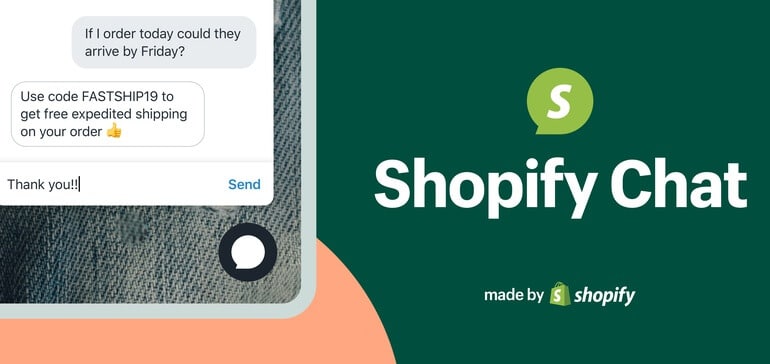
This is a global trend signal and let’s dive in to see where it’s leading us to.
6. The growth of chatbots is all the hype
In 2020, the scenario of robots invading our planet in sci-fi movies is no longer fictitious. Given that chatbot trigger buttons are present in every corner of high-traffic e-commerce web pages, ignoring these significant assistants is just not wise.
Chatbots effectively handle regular inquiries from customers. This, thus, brings you huge advantages. It closes the deal before your customers change their minds due to waiting for so long. Besides, it helps free up your time so that you can focus on your marketing campaigns and overall performance. Discrete chatbots are now built to discuss complaints better and find solutions to problems much faster than ever before.
According to Chatbots: Vendor opportunities & market forecasts 2020-2024 research, AI and chatbots will be completing over 1/2 of retail interactions without human intervention. More than 35% of respondents are also happy with getting answers from online chat platforms.
Annual global AI software revenue is expected to grow 1260% in the span of 7 years (2018 – 2025).
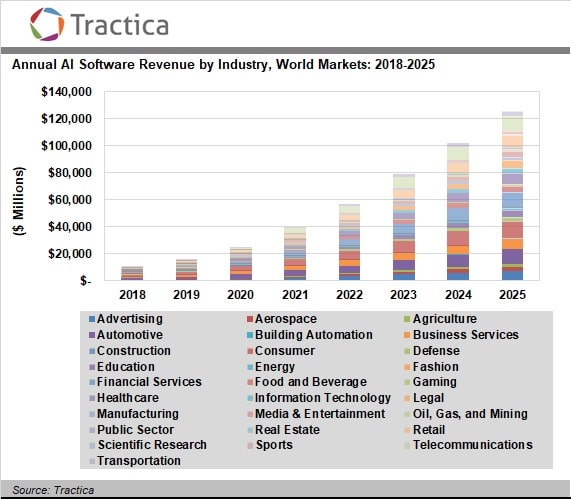
Not surprisingly, a Juniper report also suggests that consumer retail spending over chatbots will reach $142 billion by 2024. Compare to $2.8 billion in 2019, this is a continuous uptick with an annual growth rate of 400%. Chatbot, therefore, is said to be a must for future omnichannel retail strategies.
To commercialize the capability of those virtual bots, try these high-end developed chatbot platforms including Botsify, Chatfuel, FlowXO, Massively, and Google Dialogflow.
Chatbot implementation has an enormous impact on these 2 key industry sectors: Banking & Finance, along with E-Commerce & Retail.
7. Generation Z is the future greatest group of consumers
Given the proliferation in internet usage of young users, it is wise to create deeper connections with Gen Z audience who makes up 32% of the global population.
Only 1/4 of what you sell is your products, the rest is the feeling and experience they entail. Since Gen Z consumers are born into the hyperactive mobile era, they are quick to adopt new technology, open to good vibes and ready to share to get their voice heard.
This is a clear opportunity space that retailers need to navigate, given that over 90% of spending growth in the UK in the next five years are generated by Gen Z.
Gen Z so far is a captive audience on video content, it’s the perfect place to hook them in.
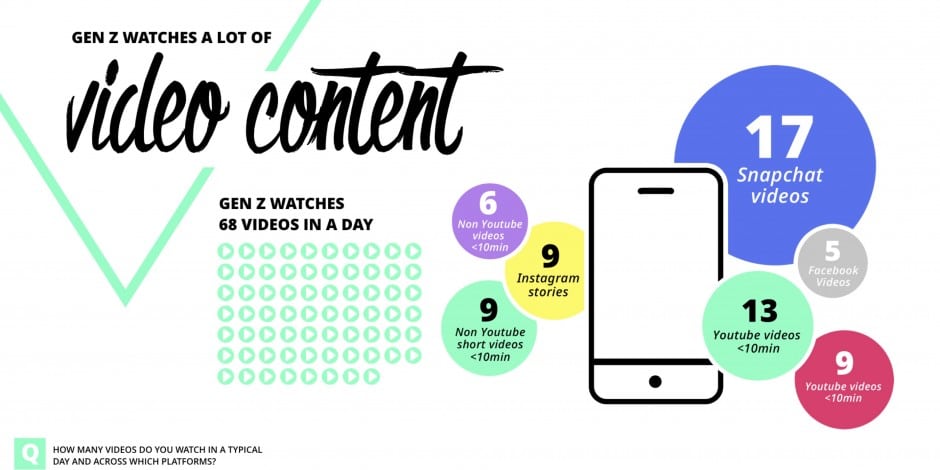
The challenge is choosing the right content and how to distribute it. This is where the so far underestimated video app Tik Tok comes to play a part in your dedicated engagement campaigns.
8. The reign of short-form videos
If content is king, video content is the emperor.
With a staggering 1.7 billion active users worldwide, TikTok has become the undisputed king of short-form video content. But what exactly makes it so successful?
TikTok stood out to be a successful viral video-sharing app. With the new leap of allowing users directly access and interact with videos on web browsers, it’s time to pay serious attention to TikTok.
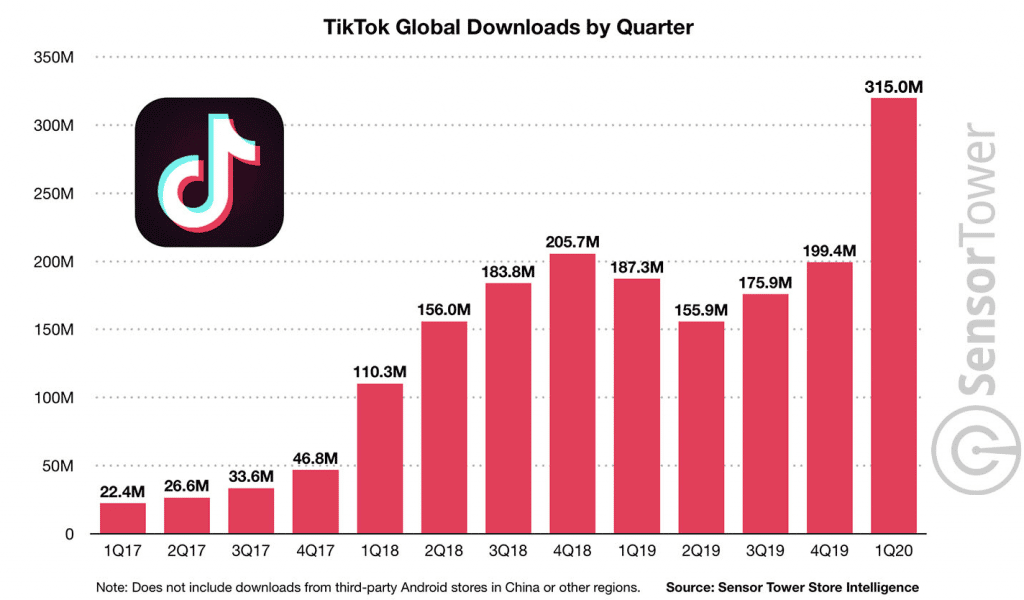
Did I mention that our generation Z fall for authenticity?
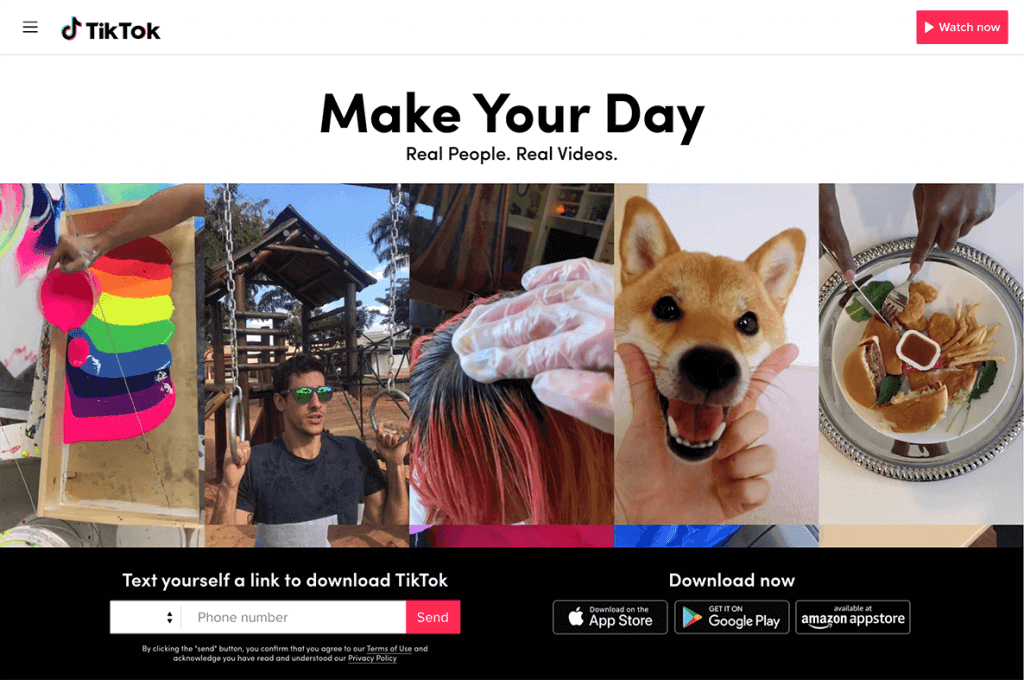
TikTok roadmap now plans to split the ad revenue with influencers. As an appreciation for their creative efforts, such encouragement would definitely keep creators producing more quality contents and engaging their fanbase.
TikTok is soon to launch a competitive advertising format with a call-to-action (CTA) button that links social influencers to marketers. A sharing program was proposed to give creators 20% of ad sales, though this is not yet officially set.
It currently doesn’t make sense to have direct comparisons between YouTube vs TikTok or Facebook vs Snapchat, simply because they are on divergent dimensions. However, if TikTok and Snapchat do not mutually exclude each other, in the end, it would be beneficial for them both.
Herrmann Digital’s media specialist, David Herrmann said he thinks both Snapchat and TikTok can co-exist and together benefit from the same audience segment. “TikTok is an awareness play. Snap is more of a conversion play. I think TikTok is definitely a player, but they still have a long way to grow.”
According to Herrmann’s experience, TikTok ads are complementary to those he runs on other networks. Check out these tips to optimize TikTok ads.
Wrapping Up
Those connected ecommerce trends will continue to accelerate, challenging the borders drawn around traditional digital content.
Ultimately, adopting game-changing technology can catapult your business to a fuller range of digital offerings. Something that you can do right away today is to personalize ecommerce transactional emails.
Will you be there to take part in shaping the online retail industry over the next decade?
